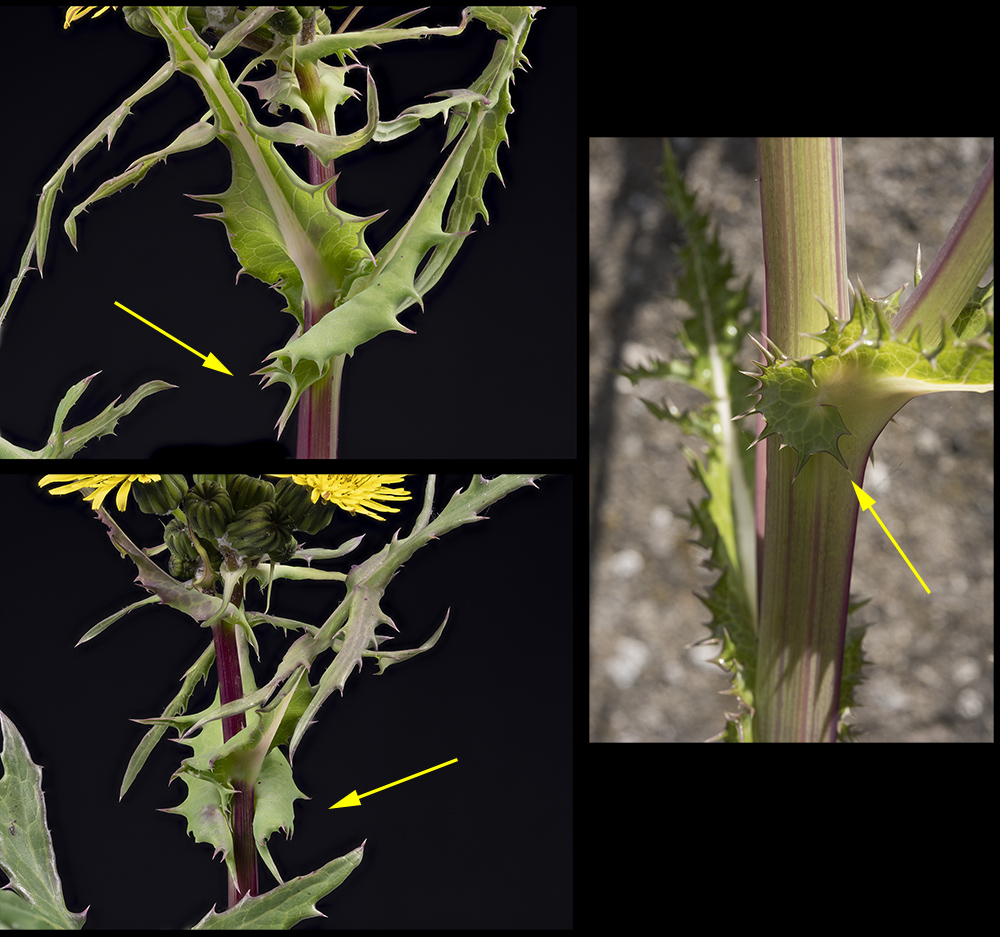Our region has two common native annual, winter annual or biennial sow-thistles that are almost ubiquitous as garden weeds, in areas of cultivated and waste ground, tracks and roadsides, these are Sonchus asper (rough sow-thistle) and S. oleraceus (smooth sow-thistle). There is also a perennial species, S. arvensis (corn sow-thistle). The genus Sonchus belongs to the daisy family, the Asteraceae.
S. asper and S. oleraceus are very similar in appearance. Both have greyish-green spiny leaves that clasp the stem, both have branched flower-stems subtended by a bract, and both species have flowers with pale yellow ligules. They often grow together in the same habitats, developing and flowering at the same time, early in the season from April onwards. So how can you tell them apart?
The commoner of the two, the smooth sow-thistle, Sonchus oleraceus has leaves that are weakly and softly spiny, and usually deeply lobed, while those of the rough sow-thistle Sonchus asper are more aggressively spiny, less lobed, or unlobed, and the upper surface is shiny green. In both species the leaves clasp the stem by their ‘auricles’. The most striking and consistent difference between the two species is that the auricles of S. oleraceus are pointed, while those of S. asper are rounded. If you have a lens, their achenes are distinctively different too. The achenes of S. oleraceus are wrinkled between their ribs, whereas those of S. asper are smooth.


S. oleraceus has flower stalks that are usually hairless, although the phyllaries have a few coarse hairs, but the phyllaries of S. asper, the flower stalks and sometimes the internodes below, are covered in dark reddish brown sticky glandular hairs.


A third native species with very nearly the same general distribution in the British Isles is the perennial corn sow-thistle, Sonchus arvensis. S. arvensis is a much larger plant than the annual species, with large, showy, deep yellow dandelion-like flowers that appear in late summer. Unlike the annual species, it may spread by means of rhizomes to produce large patches, whereas the annual species always occur as individual plants.
Like S. asper, the inflorescences and some lower internodes of S. arvensis are covered in glandular hairs, but in this species they are golden yellow, not dark red-brown. The leaves are variably pinnately lobed, and like S. asper are clasping, with rounded auricles.

Text and images © Chris Jeffree
One thought on “Sonchus species: how to tell them apart”